#federal reserve interest rates
Explore tagged Tumblr posts
Text
youtube
#mike lindell#frank speech mike lindell#ceo mike lindell#mike lindell interview#jimmy kimmel mike lindell#mike lindell trump#mike lindell symposium#rolling stone#trump telling friends he's running in 2024#donald trump golfing 47th president#golfing#federal reserve interest rates#federal reserve inflation#federal reserve#political establishment#live stream#breaking news#headline news#federal funds rate#foreign government#donald trump#Youtube
0 notes
Text
Gold Prices Set to Drop Starting August 1: Reasons and opportunity
Gold, the glittering yellow metal, has always been a symbol of wealth and a preferred investment for Indians. Traditionally, gold prices in India have been influenced by various global and domestic factors, including international market trends, currency fluctuations, and local demand and supply dynamics. As of August 1, gold prices are set to see a significant drop, creating both challenges and…
#10 grams of gold#August 1#Buying gold#Economic uncertainties#Federal Reserve interest rates#Geopolitical stability#Global economic factors#Gold demand#Gold diversification#Gold investment#Gold price forecast#Gold prices#Gold storage and security#Government policies on gold#India gold market#Jewelry purchases#Long-term investment#Rupee appreciation#Safe-haven asset#Stock market performance
1 note
·
View note
Text
Oil Prices Inch Up Despite Mixed Signals

Oil prices edged slightly higher on Friday. Contracts for Brent crude oil expiring in August climbed 0.4%, reaching $86.73 per barrel. Similarly, West Texas Intermediate (WTI) crude futures, a key benchmark for North American oil, rose 0.4% to $82.09 per barrel.
This modest increase comes amidst conflicting forces in the oil market. While concerns about potential supply disruptions from the Middle East and ongoing geopolitical tensions provided some upward pressure, a strong U.S. dollar acted as a counterweight. A stronger dollar can make oil, priced in dollars, less attractive to buyers using other currencies.
The focus for investors has now shifted to upcoming U.S. inflation data, which could influence future decisions by the Federal Reserve on interest rates. Higher interest rates can strengthen the dollar and potentially dampen demand for oil.
#Oil prices#Brent crude oil#West Texas Intermediate (WTI)#Crude oil futures#Oil market trends#Middle East supply disruptions#Geopolitical tensions#U.S. dollar strength#Federal Reserve interest rates#U.S. inflation data#Oil demand#Energy market analysis#Global oil supply#Commodities trading#Economic indicators
0 notes
Text
Strategic U.S. Bond ETF Investment: Timing and Analysis
Table of contentsUnderstanding Bond Price Movements in Response to Interest Rate ChangesWhy do I invest in US bonds?1. Anticipating Interest Rate Trends: The Peak of Federal Reserve Hikes and Their Impact on Bonds2. Identifying Market Momentum: The Role of Moving Averages in My Bond Investment Strategy3. Independent Strategy: Navigating the Underappreciated Bond MarketRisks of Bond InvestmentHow…

View On WordPress
#Bond Market Trends#Bond Price Analysis#Federal Reserve Interest Rates#Interest Rate Impact on Bonds#Investment Strategy#Retirement Pension Planning#Technical Analysis in Bonds#U.S. Bond ETFs
0 notes
Text
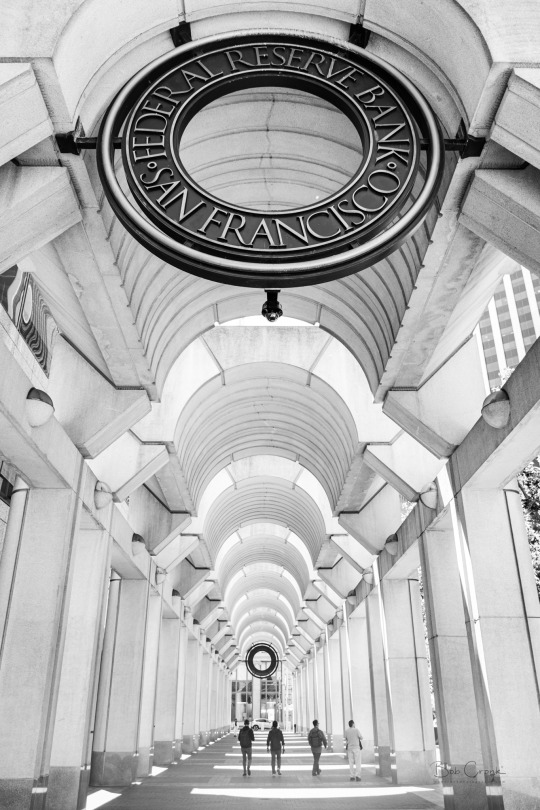
Fortress of Finance
The Federal Reserve Bank of San Francisco, California
Bob Cronk
#federal reserve#the federal reserve bank of San Francisco#San Francisco#california#urban photography#interest rates#urban explorers#bob cronk#bob cronk photography#tightening#economy#original photographers#original photography#photographers on tumblr#photography on tumblr#urban exploring photography#urban exploration
164 notes
·
View notes
Note
-50 beeps??? I dont know what to say...
How about “thank you”?
#you’re welcome#federal reserve#the fed#interest rates#federal open market committee#jay answers#jay speaks
23 notes
·
View notes
Text
Kellie Meyer at NewsNation:
(NewsNation) — The Federal Reserve on Wednesday cut its benchmark interest rate by half a percentage point, something it hasn’t done in more than four years. Federal Reserve officials were able to do this as the post-pandemic spike in U.S. inflation eased further last month. Year-over-year price increases reached a three-year low. The White House has been feeling hopeful about the state of the current economy, with officials maintaining that America can pull off a “soft landing” from inflation. “The Committee has gained greater confidence that inflation is moving sustainably toward 2%, and judges that the risks to achieving its employment and inflation goals are roughly in balance,” the Fed said in a statement.
For the first time in four years, the Federal Reserve has cut its interest rate. This cut is a half percent (0.5%).
17 notes
·
View notes
Text
How the Federal Reserve Manipulates Interest Rates
youtube
#blackwolfmanx4#ancap#libertarian#the pholosopher#federal reserve#interest rates#abolish the government#abolish the state#end the fed#free the market#capitalism#Youtube
7 notes
·
View notes
Text
Leftists talk about big tech being bad and point to the low interest rates the Federal Reserve set after the 2008 recession boosting the stock market and tech companies. But they make no further connection to the Federal Reserve as whole. Perhaps the Federal Reserve should not have this kind of power. Basically, I mean this:

18 notes
·
View notes
Text
Former President Donald Trump said Thursday that he would like a "say" in setting interest rates if he is reelected, further raising the prospect that the Republican nominee could seek to reduce the independence of the Federal Reserve if he wins in November. "I feel the president should have at least say in there, yeah, I feel that strongly," the presidential candidate said in response to a question about the US central bank interest rate policy and the prospects of a soft landing for the US economy. The brief comments came near the end of a news conference Thursday at his Mar-a-Lago club in Florida.
4 notes
·
View notes
Text
Fed’s Powell marks patient approach after rate cut
The Federal Reserve cut interest rates by a quarter percentage point amid what could be an economic challenge when President-elect Donald Trump takes office next year, according to Reuters.
Fed Chair Jerome Powell said the outcome of Tuesday’s presidential election would not have a “near-term” impact on US monetary policy. Powell added that the Fed will continue to evaluate the data to account for inflation, which slowed markedly last year and is approaching the US central bank’s 2% target.
It’s a process that takes some time. It’s all of the policy changes that are happening. What’s the net effect? The overall effect on the economy at a given time? That’s a process … we go through all the time with every administration.
However, the exact destination remains unknown and will be even harder to determine if fiscal and tax policy changes as quickly as Trump has promised. Powell, who was appointed by Trump and then clashed with him during the Republican president’s first term, will now oversee monetary policy in the first critical months of the new administration.
So far, inflation and interest rates have fallen in line with the Fed’s forecast, which believes price pressures continue to ease amid continued economic growth and the labour market.
Elyse Ausenbaugh, head of investment strategy at J.P. Morgan Wealth Management, did not rule out the possibility of another quarter per cent rate cut at the Fed’s final meeting of the year on December 17-18.
The easy cuts have been made, and maybe December won’t be too contentious either. Thereafter, I imagine the Fed is asking the same questions as investors – to what extent and when will the incoming Trump administration implement its campaign policy proposals?
Powell said the economic outlook was good at this point and the Fed hoped it would remain that way.
This further recalibration of our policy stance will help maintain the strength of the economy and the labor market, and will continue to enable further progress on inflation as we move toward a more neutral stance over time.
The Fed’s policy statement noted that risks to the labour market and inflation are “roughly in balance,” repeating language from the statement issued after the September 17-18 meeting.
Powell stated that the change in wording did not mean that inflation had become sustainable. The Fed, he said, had always expected progress to be uneven, and policymakers have confidence that inflation is on a steady path toward the 2% target.
Read more HERE

#world news#news#world politics#usa#usa politics#usa news#united states#united states of america#us politics#donald trump#donald trump 2024#trump#trump 2024#president trump#republicans#interest rates#jerome powell#us federal reserve#economy#economic growth#economic impact#economic development#economics
2 notes
·
View notes
Text

Federal Reserve stuck between a rock and a hard place
#Federal Reserve#US Federal Reserve#Interest rate#High inflation#Biden inflation#Bidenflation#Banking crisis#Biden economy#Here comes the recession#2023 crash#Daily struggle
48 notes
·
View notes
Text
Fed raises interest rates

View On WordPress
#America#bank#banking#economics#economy#Fed#Federal Reserve#interest rate#meme#memes#money#news#recession#united states
14 notes
·
View notes
Text
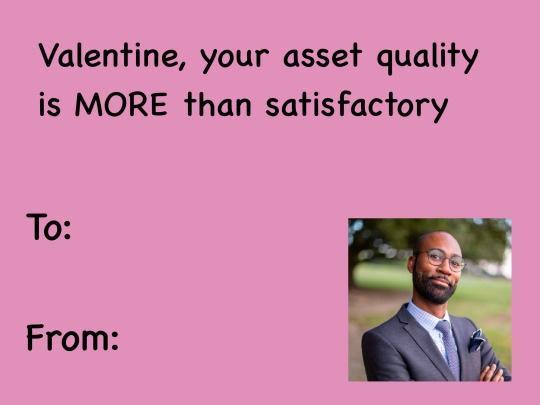

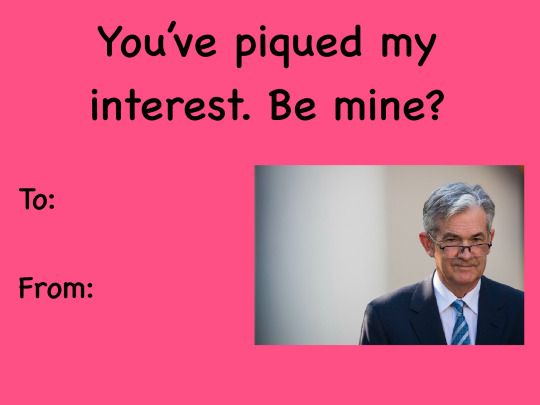
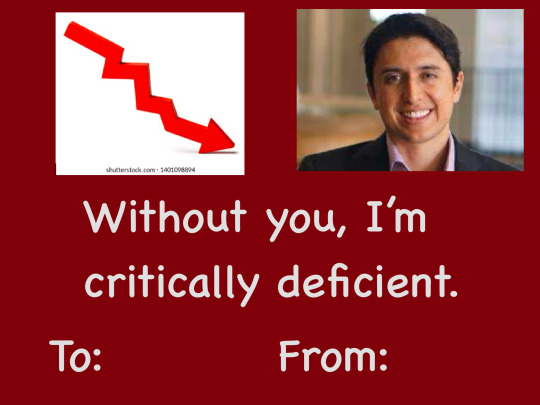


I made some Valentine’s Day cards for you all to share with your favorite bank examiners and/or economists! With a little help from my friend @tricksypixie of course ☺️
#valentines memes#valentines day#valentines cards#jay speaks#federal reserve#the fed#interest rates#economics
69 notes
·
View notes
Text
Credit Event Coming??? Michael Douville
Global liquidity and money are in short supply. Liquidity is the fuel of the economy. Bank deposits are decreasing. Things are getting more difficult to get a loan.
Proverbs 27:12 The prudent sees danger and hides himself, but the simple go on and suffer for it. Proverbs 4:13 Hold on to instruction; do not let go. Guard it, for it is your life. Are we entering another Credit Event? I remember Lehman Brothers and Bear Stears. These events start slow and gather speed until things start to cascade. Germany’s Deutsche Bank is in the news. Credit Default Swaps…

View On WordPress
#banks#bonds#cash#Chairman Jerome Powell#credit default swaps#credit event#Danielle DiMartino Booth#Deutsche Bank#Europe#Federal Reserve#interest rates#liquidity#money supply
3 notes
·
View notes
Text
US Federal Reserve | FED | fed funds rate | Fed Impact |fed rate like | fed rate hike |fed interest rate hike | fed news
US Federal Reserve increases 0.25% in Fed Rate, tomorrow Indian Stock Market will be engaged Fed Rate Hike: Once again the US Federal Reserve has raised the Fed rate by 25 basis points on Wednesday। It will also affect the Indian stock market. US Federal Reserve hiked Fed Rate: The US Federal Reserve on Wednesday raised the Fed rate to 25 basis points। Since this announcement, the interest rate…
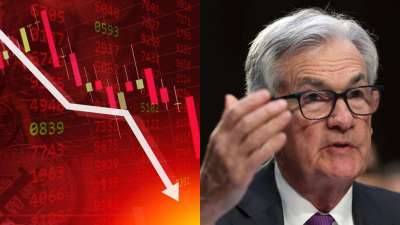
View On WordPress
#FED#fed funds rate#Fed Impac#fed interest rate hike#fed news#fed rate hike#fed rate like#US Federal Reserve
2 notes
·
View notes